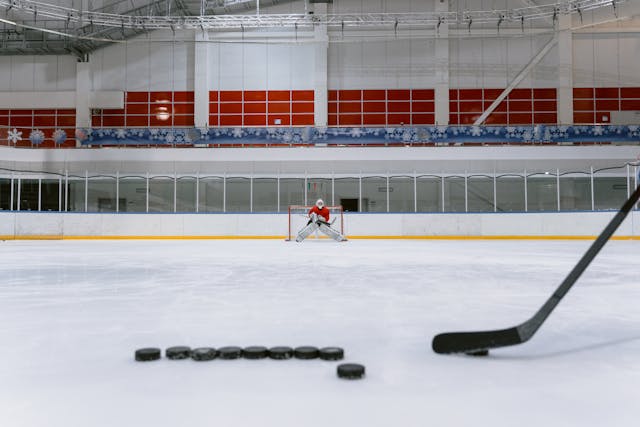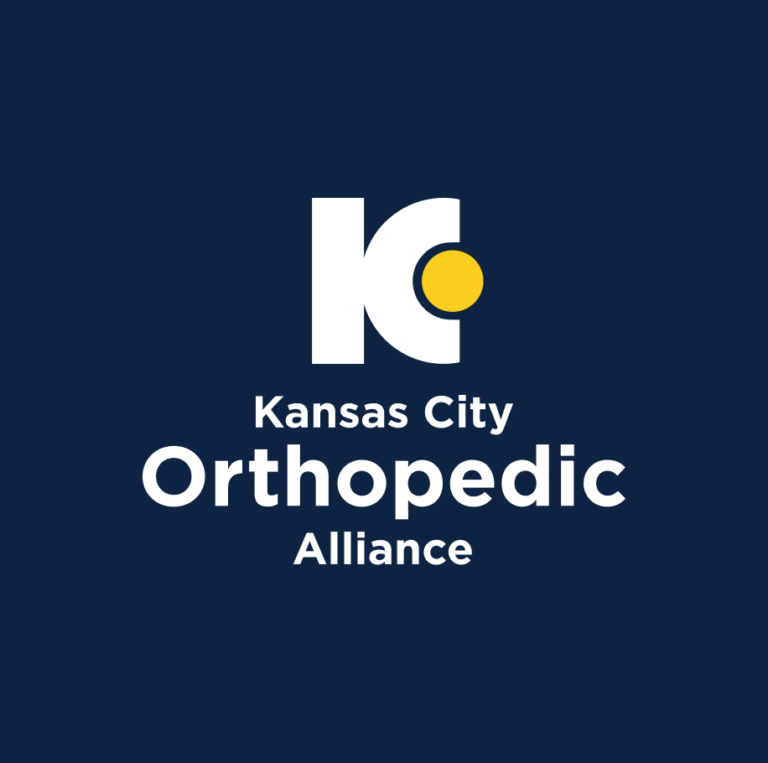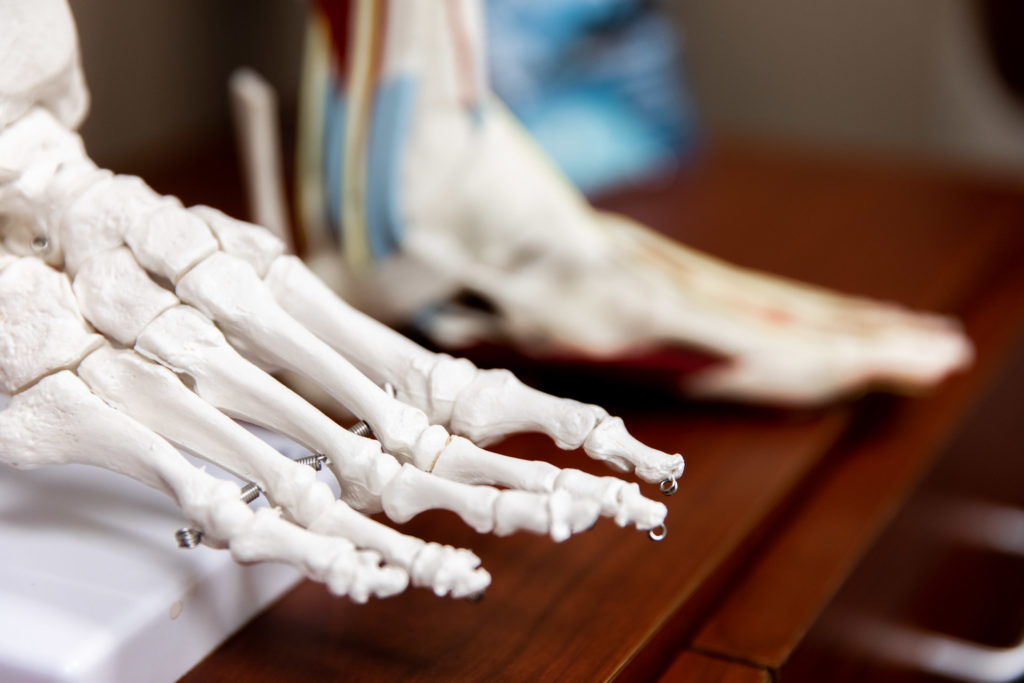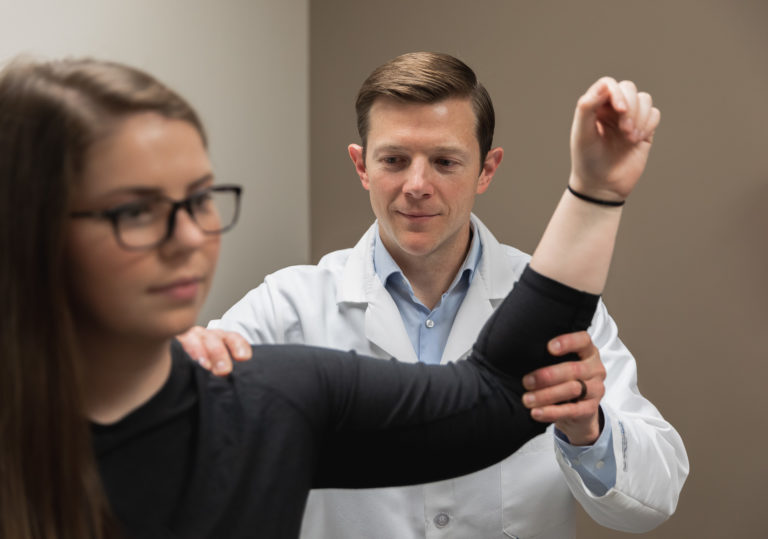
Hockey is one of the most exhilarating sports, known for its speed, agility and high-impact collisions. However, it’s also one of the most physically demanding, and the risk of injury is significant at all levels of play. Whether you’re competing in a high school championship, playing in college or enjoying a rec league game, knowing how to protect yourself—and what to do if you’re injured—can make all the difference.
At KCOA and KCOI, we know hockey injuries inside and out. KCOA is proud to be the official sports medicine provider for the Kansas City Mavericks, is a proud sponsor of AdventHealth Sports Park at BluHawk and we’ve helped countless players recover and return to the sport they love. Let’s break down the top injuries hockey players face, how to prevent them and the expert care options available in Kansas City.
Top 5 Common Hockey Injuries
1) Shoulder Injuries (Dislocations, Rotator Cuff Tears and AC Joint Sprains)
Hockey’s fast-paced, physical nature often puts players’ shoulders at risk. From intense body checks to falls on the ice, shoulder injuries are all too common.
- Symptoms: Pain, limited range of motion, swelling and in severe cases, visible deformity.
- Why They Happen: Collisions with other players or the boards, combined with the repetitive strain of shooting and passing, can lead to shoulder dislocations, rotator cuff tears and AC joint sprains.
- Prevention Tips:
- Invest in high-quality, properly fitted shoulder pads.
- Include exercises like dumbbell presses, push-ups and shoulder stabilization drills in your workout routine.
- Practice proper body-checking techniques to avoid awkward falls.
- Treatment Options: Depending on the severity, you might need physical therapy, cortisone injections or surgery. Our specialists use advanced techniques to help players recover quickly and fully.
2) Knee Injuries (ACL Tears and Meniscus Tears)
Quick stops, sudden direction changes and player collisions place enormous stress on the knees, making them one of the most vulnerable joints in hockey.
- Symptoms: Swelling, instability, popping sensations or difficulty bearing weight.
- Why They Happen: The intense movements required in hockey, combined with impact injuries, can lead to ligament tears (like ACL or MCL) or meniscus damage.
- Prevention Tips:
- Incorporate leg-strengthening exercises like squats and lunges into your fitness program.
- Focus on agility training to improve your stability during quick pivots.
- Use properly fitted skates to maintain knee alignment on the ice.
- Treatment Options: Based on the findings from the evaluation performed by a KCOA specialist, treatments like physical therapy may be deployed. If a significant tear or disruption is noted, surgery using minimally invasive techniques at our orthopedic specialty hospital, KCOI, might be necessary.
3) Groin Sprains
Groin injuries are particularly common among hockey players due to the quick lateral movements required for skating.
- Symptoms: Pain or tightness in the inner thigh, swelling or difficulty skating.
- Why They Happen: Skating’s unique mechanics put a lot of strain on the groin muscles, especially if players don’t warm up properly or overexert themselves.
- Prevention Tips:
- Prioritize dynamic stretching before games and practices, focusing on the hip flexors and groin muscles.
- Incorporate core-strengthening exercises like planks and side lunges into your training.
- Gradually increase the intensity of your skating drills to avoid overuse injuries.
- Treatment Options: Mild strains typically improve with rest and targeted physical therapy. KCOA providers working with their physical therapy partners can set up a plan to focus on restoring strength and flexibility to get you back on the ice safely.
4. Wrist and Hand Injuries (Fractures and Sprains)
Whether blocking shots, falling or handling a stick, hockey players frequently injure their wrists and hands.
- Symptoms: Swelling, bruising, reduced grip strength or difficulty moving the fingers or wrist.
- Why They Happen: The repetitive motions of shooting and puck-handling, combined with falls and impacts, can cause fractures, ligament sprains or tendon injuries.
- Prevention Tips:
- Use protective gloves that offer ample wrist support.
- Practice proper techniques for falls to reduce the risk of landing on your hands.
- Treatment Options: From splints to surgical care, KCOI and KCOA can provide a full range of surgical and nonsurgical treatments for wrist and hand injuries.
 5. Hip Injuries
5. Hip Injuries
Hockey involves repetitive motions like skating, quick turns, and powerful shots, all of which can strain the hip muscles and surrounding structures.
- Symptoms: Pain in the hip area, groin pain, limited range of motion, stiffness, and difficulty walking or skating.
- Why They Happen: Falls, collisions, and overuse, along with hockey’s repetitive and quick motions, can also contribute to hip injuries. Common injuries include hip flexor strains, labral tears, and bursitis.
- Prevention Tips:
- Maintain flexibility in the hip muscles through regular stretching, including dynamic stretches before activity.
- Strengthen the muscles surrounding the hip, including the core, glutes, and hip flexors. Exercises like squats, lunges, and side planks can be beneficial.
- Proper warm-up before skating or playing, including light cardio and sport-specific movements.
- Ensure proper skating technique to minimize strain on the hips.
- Treatment Options: Treatment will depend on the specific injury. Options may include rest, physical therapy, anti-inflammatory medication, injections (such as cortisone), and in some cases, surgery. KCOA specialists can provide a comprehensive evaluation and create a personalized treatment plan.
Injury Prevention Strategies for Hockey Players
Preventing injuries in hockey involves more than wearing the right gear—it requires a proactive approach to training, preparation and recovery.
- Invest in High-Quality Equipment: Ensure helmets, pads and skates fit well and meet safety standards. Poorly fitted gear increases the risk of injury.
- Warm Up and Stretch: Skipping your pre-game warm-up can leave muscles tight and prone to strain. Dynamic stretches and light skating drills can help loosen up your body.
- Condition Off the Ice: A well-rounded fitness program with strength, flexibility and agility training is essential. Focus on areas like core stability, lower-body strength and endurance.
- Stay Hydrated and Rested: Dehydration and fatigue increase the risk of injury, so stay hydrated and ensure you’re well-rested before hitting the ice.
What To Do If You Are Injured?
 If you experience pain or suspect an injury, it’s critical to act fast. Ignoring symptoms can lead to further damage or longer recovery times. Here’s how KCOI and KCOA can help:
If you experience pain or suspect an injury, it’s critical to act fast. Ignoring symptoms can lead to further damage or longer recovery times. Here’s how KCOI and KCOA can help:
- Expert Diagnosis: Our orthopedic specialists use advanced imaging and diagnostic tools to pinpoint the problem.
- Customized Treatment Plans: From physical therapy to surgery, we provide tailored care to get you back on the ice.
- Comprehensive Recovery Support: Our team offers rehabilitation programs designed specifically for hockey players, ensuring a safe and effective return to play.
- Request an Ortho Urgent Care Appointment in the event you need specialized orthopedic urgent care.
Why Choose KCOI and KCOA for Your Care?
 Hockey demands speed, strength and resilience—but injuries can sideline even the toughest players. That’s where KCOI and KCOA come in. With decades of experience treating athletes, we are trusted leaders in orthopedic care, specializing in injury prevention, treatment and rehabilitation. As the official sports medicine provider for the Kansas City Mavericks and proud supporters of local hockey, we understand the unique challenges of the sport and provide expert care tailored to the needs of high school, college and recreational players alike.
Hockey demands speed, strength and resilience—but injuries can sideline even the toughest players. That’s where KCOI and KCOA come in. With decades of experience treating athletes, we are trusted leaders in orthopedic care, specializing in injury prevention, treatment and rehabilitation. As the official sports medicine provider for the Kansas City Mavericks and proud supporters of local hockey, we understand the unique challenges of the sport and provide expert care tailored to the needs of high school, college and recreational players alike.
From knee injuries to shoulder dislocations and wrist fractures, our team of specialists is equipped with the latest advancements in sports medicine to help you recover quickly and safely. We offer state-of-the-art imaging, innovative treatment options and customized rehabilitation programs designed specifically for hockey players. Whether you’re looking for non-surgical treatment, physical therapy or advanced surgical care, we’re committed to getting you back on the ice with confidence.
Don’t let an injury keep you from playing the game you love. Take the first step toward recovery and prevention by requesting an appointment with a KCOA specialist. Explore the full range of services available on our services tab to get the expert care you need.
Your performance on and off the ice matters, and at KCOI and KCOA, we’re here to keep you healthy, strong and ready to play.


